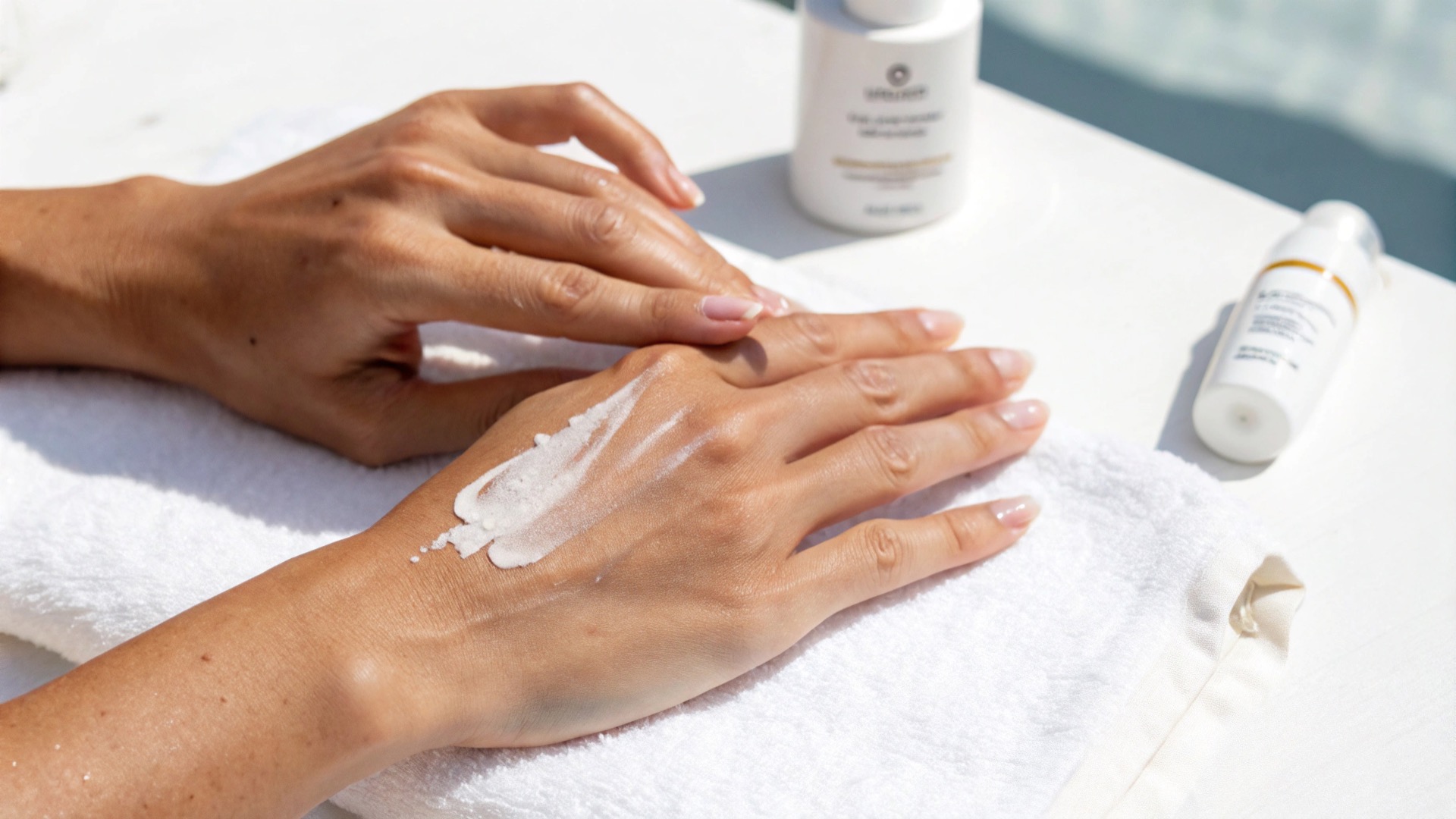Key takeaways
- Young blood infusion demonstrates benefits for aging in laboratory animals, but human effectiveness remains unproven. Clinical studies are beginning to explore therapeutic applications, but well-controlled trials are still needed to establish safety and efficacy.
- Research reveals key pathways, including DNA methylation changes, mitochondrial enhancement, and growth factor restoration. Blood transfusion risks and ethical considerations remain important factors that require regulatory oversight.
- Be cautious of unvalidated commercial offerings; focus on established anti-aging approaches while legitimate research continues.
Overview
The idea of using young blood to reverse aging may sound like science fiction, but cutting-edge research is turning this concept into a scientific reality. Scientific investigations are actively exploring how young blood might impact the aging process, uncovering molecular mechanisms and potential pathways for intervention.
For centuries, humans have searched for the fountain of youth, and now scientists are discovering preliminary evidence that certain factors in blood might play a role in the aging process.
Aging brings cellular dysfunction, organ deterioration, and increased disease risk that traditional medicine struggles to address comprehensively. Current anti-aging treatments focus on symptoms rather than root causes, leaving millions to face inevitable decline in physical and cognitive function as they age.
Scientific research in animal models suggests that young blood reverses some aspects of the aging process at the cellular and organ level, providing experimental evidence that supports further investigation.
Young blood infusion represents an experimental approach being investigated for its potential to target aging at the cellular level, though human efficacy remains unproven, and significant questions about safety and effectiveness persist.
What are young donor plasma infusions?
Young blood infusion, also known as young plasma therapy or heterochronic plasma exchange, involves transfusing blood or plasma from young donors into older recipients. This experimental therapeutic approach aims to restore youthful biological functions by introducing circulating factors that decline with age.
The therapy remains largely investigational, with significant questions remaining about optimal protocols, safety, and actual human benefits. The concept gained scientific credibility through parabiosis studies, in which researchers surgically connected the circulatory systems of young and old laboratory animals.
These experiments often compare the effects of young blood plasma and plasma treatment protocols, with donor age being a critical variable. These experiments revealed that young blood contains potentially rejuvenating factors that can revitalize aged tissues and organs in animal models.
Modern approaches focus primarily on plasma transfusion rather than whole blood, as plasma contains the beneficial proteins, growth factors, and signaling molecules potentially responsible for anti-aging effects. Other proteins present in young blood plasma may also contribute to the observed effects.
The scientific foundation: Promise and limitations
Revolutionary research findings
Scientists from leading institutions have documented results from young blood infusion studies in laboratory animals. Early experiments with rats showed that researchers found lifespan extension and tissue rejuvenation following exposure to young blood. Albino rats were frequently used in these foundational studies.
In animal models, studies in older mice receiving young blood from young mice demonstrated reversal of age-related impairments and improvements in brain aging.
Bone marrow rejuvenation was also observed in some studies, along with improvements in aged tissues and organs in animal models.
Critical limitation: These results have not been replicated or validated in human subjects. What works in laboratory animals frequently fails to translate to human medicine.
Mechanisms of action
Young blood appears to work through several pathways in animal studies:
- DNA methylation reset: Animal studies suggest young blood can influence epigenetic markers associated with aging. Changes in gene expression and the regulation of genes involved in aging are being studied using single-cell RNA sequencing to understand these effects better better.
- Growth factor restoration: Analysis reveals specific pathways related to insulin-like growth factors and immune functions that young plasma components may influence. Growth differentiation factor and other circulating factors have been identified as key contributors to the observed rejuvenation effects.
- Physical and cognitive improvements: In animal studies, benefits extend beyond molecular changes to visible improvements in health and appearance, though human relevance remains unclear. Improvements have been observed in liver cells, muscle cells, and blood cells, with stem cells and hematopoietic stem cells playing a significant role in tissue regeneration.
Exposure to a young systemic environment can rejuvenate aged tissues at the cellular and molecular level, revitalizing stem cells and enhancing the function of various organs through the modulation of gene expression and circulating factors.
Significant safety and ethical concerns
FDA warnings and regulatory issues
The FDA has warned explicitly against commercial young blood treatments for anti-aging purposes. FDA Commissioner Scott Gottlieb has emphasized the dangers of such practices, noting that these treatments lack regulatory approval and scientific backing for anti-aging applications. Current research focuses heavily on safety protocols, as blood transfusion carries inherent risks, including:
- Immune reactions and allergic responses
- Disease transmission risks
- Blood type compatibility issues
- Unknown long-term consequences
- Lack of standardized treatment protocols
Important safety note: Young blood infusion remains an unproven treatment for anti-aging purposes. Consumers should be highly cautious of unscrupulous actors offering treatments that lack regulatory approval and scientific validation.
Ethical and practical challenges
The field faces several critical considerations:
- Source and consent issues for young donor blood
- High costs and limited accessibility of experimental treatments
- Absence of long-term safety monitoring data
- Complex regulatory approval processes
- Exploitation of desperate patients seeking anti-aging solutions
What current science tells us about effectiveness?
Human efficacy remains unclear
Current scientific evidence supports some effectiveness of young blood transfusions for aging in animal models; however, it remains entirely unclear whether these effects translate to humans. Early animal studies demonstrate potential benefits, but human applications are still in preliminary stages with no definitive proof of effectiveness.
The treatment shows measurable benefits in animal studies across multiple domains, but human relevance is unestablished:
- Molecular level: DNA methylation patterns in animals
- Cellular level: Improved mitochondrial function in laboratory settings
- Organ level: Enhanced function in animal cardiovascular, nervous, and immune systems
- Organism level: Extended lifespan in laboratory animals only
Critical research gaps
Significant limitations in current research include:
- Minimal human clinical data
- Small sample sizes in existing studies
- Lack of proper control groups in many studies
- Absence of long-term human safety data
- Significant variations in results across research groups
- Unknown optimal dosing and treatment protocols
Current research and human applications: The reality
Clinical trial status
While most definitive research has been conducted in animal models, human studies are beginning but remain extremely preliminary with unclear efficacy. Researchers are exploring applications for various conditions, but no treatments have been proven effective for anti-aging in humans.
Areas under investigation include:
- Alzheimer’s disease and cognitive decline
- Multiple sclerosis
- Post-traumatic stress disorder (PTSD)
- Age-related muscle weakness (sarcopenia)
- Cardiovascular disease
- General age-related functional decline
Critical note: These are investigational applications only, not proven treatments.
The hype vs. scientific reality
Media misrepresentation
Headlines about “fountain of youth” discoveries frequently misrepresent the preliminary and uncertain nature of current research. The scientific reality requires far more caution and skepticism than popular media suggests.
Commercial exploitation
Some clinics offer young blood treatments despite the lack of proven human efficacy, potentially putting patients at serious risk while charging substantial fees for unvalidated and potentially dangerous procedures.
What do leading scientists recommend?
Even researchers supportive of young blood research emphasize:
- More rigorous research is essential before drawing any conclusions about human effectiveness or safety
- Alternative approaches focusing on specific beneficial factors may be safer than whole blood transfusions
- Proper regulatory oversight and clinical trials are necessary
- Extreme caution regarding commercial treatments
Alternatives and established anti-aging approaches
For individuals interested in evidence-based anti-aging interventions, established approaches with strong evidence bases remain the most reliable options:
- Regular physical exercise
- Proper nutrition and dietary management, including the regulation of food intake to support healthy aging
- Stress reduction and management
- Adequate sleep and recovery
- Proven medical treatments for age-related conditions
- Social engagement and mental stimulation
These approaches have decades of research supporting their effectiveness and safety.
Final assessment: Scientific skepticism required
Young blood infusion represents an intriguing but highly preliminary area of aging research. The field remains in its infancy regarding human applications, with significant questions about safety, efficacy, and practical implementation.
Current scientific consensus:
- Animal studies show limited but interesting effects
- Human efficacy remains completely unproven
- Safety concerns require extensive evaluation
- Commercial treatments are premature and potentially dangerous
- Regulatory approval is essential before any clinical recommendations
While young blood research may eventually contribute to anti-aging medicine, current evidence does not support clinical use. The scientific process requires patience, rigorous testing, and healthy skepticism—especially when dealing with interventions that could significantly impact human health and longevity.
Anyone considering experimental anti-aging treatments should:
- Consult with qualified healthcare providers
- Be extremely wary of unregulated commercial offerings
- Focus on proven anti-aging strategies
- Wait for proper clinical validation before considering experimental treatments
Bottom line
Legitimate research continues in this area, with scientists working to:
- Identify specific beneficial factors in young blood
- Develop safer alternatives to whole blood transfusion
- Conduct properly controlled human trials with adequate sample sizes
- Establish appropriate safety and efficacy standards
- Provide regulatory oversight for any potential treatments
- Conduct research in developing countries to better understand global variations in aging and disease prevalence
Young blood transfusion research requires continued investigation under proper scientific and regulatory oversight. Current evidence does not support rushing into treatments for humans. Healthy skepticism and adherence to established scientific standards are essential when evaluating any anti-aging intervention, particularly those that capitalize on preliminary research findings without proper human validation.
Frequently asked questions (FAQs)
- Is young blood infusion safe for humans?
Current research focuses on safety protocols, but early human studies suggest the procedure can be conducted safely when proper medical protocols are followed. However, like all blood transfusions, there are inherent risks that require careful medical supervision. Health care providers must carefully screen donors and monitor recipients to ensure safety and minimize complications.
- How much does young blood infusion cost?
Costs vary significantly depending on the specific protocol and location. As the treatment is still largely experimental, pricing is not standardized, and many procedures are conducted as part of research studies rather than commercial treatments.
- How often would someone need young blood infusion treatments?
Research suggests that regular treatments provide the best results. Beginning at 25.6 months of age, each rat of the treated group received a slow (2 minutes) i.p. injection of young plasma (1 mL) every other week, indicating that consistent scheduling may be necessary for optimal benefits.
- Can young blood infusion reverse aging completely?
While young blood infusion shows remarkable results in reversing many aspects of aging, current evidence suggests it provides significant but not complete age reversal. The treatment appears to slow aging progression and restore some youthful characteristics rather than returning organisms to a completely young state. Research in animal models shows improvements in hippocampal function, hippocampal neurogenesis, hippocampal-dependent learning, and synaptic plasticity, particularly in the aging brain. Rejuvenation of aged progenitor cells and modulation of T cells may contribute to these effects.
- Are there alternatives to young blood infusion for anti-aging?
Yes, researchers are exploring concentrated plasma fractions, specific growth factors, and synthetic compounds that mimic young blood’s beneficial effects. Young adults are often the source of blood or plasma in research studies investigating these alternatives. Young sEVs enhance respiratory capacity in vitro, suggesting that targeted therapies focusing on specific blood components may provide similar benefits with potentially fewer risks.
References
- Chen, X., et al. (2024). Small extracellular vesicles from young plasma reverse age-related dysfunction. Nature, 4(6), 814–838.
- Chiavellini, P., et al. (2024). Young plasma rejuvenates blood DNA methylation profile, extends lifespan and healthspan in old rats. Aging (Albany NY), 79(5). PMC.
- Harvard Stem Cell Institute. (2025). Blood tells old cells to act young. News release.
- Columbia University Irving Medical Center. (2023). Will revitalizing old blood slow aging? News article.









